UNITY










MAGAZINE
Mental Health & Me Whats Trust Got to do with it! The Commish’s First 120 days VOL. I ISSUE I MAY 2024

Council 220 Executive Committee
President – Jessica LaPointe
Executive Vice President – Bill Price
First Vice President – Edwin Osorio
Second Vice President – Sherry Jackson
Third Vice President – Joel Smith
Fourth Vice President – Linda Mason
Boston RVP – Greg Laylack
Secretary – Jill Hornick
Treasurer – Jennifer Kirkham
New York RVP – Angela Digeronimo
Philadelphia RVP – Nicole McMillin
Atlanta RVP – Jimmy Botts
Chicago RVP – Amber Westbrook
Dallas RVP – Ana Rivers
Kansas City RVP – Jeremy Maske
Denver RVP – Jordan Harwell
San Francisco RVP – Stephanie Rodriguez
Seattle RVP – John Pfannenstein
TO OUR CONTRIBUTING WRITERS
Thank you for your invaluable contributions to Unity Magazine. Your dedication and talent have shaped our publication's new direction, making it more engaging and impactful for our readers. We deeply appreciate your collaboration and look forward to continuing our journey together.

MAGAZINE UNITY
COUNCIL STAFF
Editor-in-Chief – L. Greg Dorsey
Graphic Designer – Deidre B.G Southerland
Staff Photographer- Delia Trevino
Writer Coordinator- Angela Digeronimo
FROM THE
GREG DORSEY
EDITOR
EDITOR-IN-CHIEF
LOCAL 3184
In today's political landscape, where partisan divisions often overshadow the needs of the American people, one issue stands out as a beacon of bipartisan concern: the funding of the Social Security Administration (SSA).
“It is imperative that Congress sets aside partisan differences and prioritizes funding for the SSA.”.

This year’s AFGE Legislative Conference in Washington, DC, brought this issue to the forefront, highlighting the critical importance of adequate funding for the SSA to protect Social Security benefits, enhance service delivery, support the workforce, and address technological needs. Despite the crucial role the SSA plays in the lives of millions of Americans, it faces significant challenges. Political dynamics in Congress, marked by partisan bickering, have hindered efforts to secure necessary funding Budgetary constraints have further compounded the problem, making it difficult to prioritize SSA funding amid competing demands.
AFGE members, under the direction of Council 220 President, Jessica LaPointe and the support of Commissioner Martin O’Malley, have shown remarkable dedication in their advocacy efforts. Their commitment to securing additional resources for staffing, training enhancements, and retention strategies is commendable These efforts are not just about numbers on a budget sheet; they are about ensuring that retirees, disabled individuals, survivors, and their families receive the benefits they depend on.
As we move forward, it is imperative that Congress sets aside partisan differences and prioritizes funding for the SSA The well-being of millions of Americans depends on it Every SSA employee can make a difference by staying engaged in the process. When the Union puts out a call to action, be ready to answer the call!
U N I T Y M A G

HAPPY PUBLIC SERVICE RECOGNITION WEEK!
 by: Jessica Lapointe
by: Jessica Lapointe
Commissioner O'Malley's gift to SSA employees of 6 hours of administrative leave for public service recognition week is the direct result of improved relations, communications, and understanding with union leadership.
We are still advocating for and working hard to establish the repairs we need to have a more lasting impact on sustained and improved morale:
Reasonable appointment schedules with increased and dedicated adjudication time must be prioritized.
Improved manager screening, training, and performance evaluations that leads to a more happy and productive workforce and less turn over is crucial Improved training models in order to retain the new hires will be fundamental.
Although the Commissioner's announcement in granting the time off as a thank you for our service will aid in a small temporary boost of employee morale, at the end of the day, Congress should recognize and thank every hard-working SSA employee by funding the agency properly so that we can increase our staffing to meet public demand.
Keep up the great work everyone! You are all out there working hard and it shows. Our members are represented very well and for that, the Union thanks you, not just during public service recognition week, but every single day.

WHAT’S WHAT’S TRUST TRUST GOT TO DO WITH IT? GOT TO DO WITH IT?
By Angela Digeronimo Local 2369
"Building trust takes time and effort, but the rewards are well worth it"
Trust is the cornerstone of any successful workplace. It is the glue that binds teams together, fosters collaboration, and drives organizational success. In today's fastpaced and dynamic work environments, building and maintaining trust is more important than ever.
Leaders play a crucial role in establishing trust within their teams. They can achieve this by demonstrating integrity, being transparent in their actions and decisions, and showing genuine care and respect for their team members When leaders lead with honesty and integrity, they create a culture of trust where team members feel safe to voice their opinions, share their ideas, and take calculated risks.
Effective communication is another key component of building trust. Leaders should strive to keep their team members informed about relevant information, listen actively to their concerns, and provide timely and constructive feedback. Open and transparent communication fosters trust and helps to prevent misunderstandings and conflicts.
Trust is a two-way street, and team members also have a responsibility to build and maintain trust within their teams. By being reliable, accountable, and respectful in their interactions with others, team members can contribute to a positive and trusting work environment.
In times of adversity, trust is put to the test. It is during these challenging times that true leaders shine. By remaining calm, confident, and compassionate, leaders can inspire trust and confidence in their team members, helping them navigate through difficult situations successfully.
Building trust takes time and effort, but the rewards are well worth it. Teams that trust each other are more engaged, collaborative, and innovative, leading to higher levels of productivity and success. By prioritizing trust in the workplace, leaders can create a positive and thriving work environment where everyone can achieve their full potential.
WHATARE OPERATIONAL NEEDSANDWHY SHOULDICARE?
 by: Edwin Osario
Local 3369
by: Edwin Osario
Local 3369
“The Union's advocacy for clarity and accountability regarding "operational needs" aims to prevent abuses of power by the Agency"

The term "operational needs" has sparked controversy within the Social Security Administration (SSA), especially among AFGE representatives, due to its ambiguity and potential for exploitation Despite its frequent use in agreements between the Agency and its employees, the term lacks a clear definition, leading to confusion and disputes
Unlike other terms in SSA agreements, such as "employee" or "overtime," the absence of a clear definition for "operational needs" raises questions about its purpose and interpretation. The Union argues that the term is often wielded by the Agency as a catch-all justification for managerial decisions, bypassing negotiation processes and exercising unchecked authority.
To challenge the Agency's use of "operational needs," the Union interprets its meaning based on context and practicality. This interpretation involves assessing whether the alleged operational necessity justifies deviations from standard procedures and considering the impact on employees. The Union insists on transparency and accountability, requiring the Agency to substantiate claims of operational necessity with evidence.

The Union's advocacy for clarity and accountability regarding "operational needs" aims to prevent abuses of power by the Agency. By establishing a standard for evaluating the legitimacy of operational requirements, the Union seeks to protect the rights of SSA employees and uphold the integrity of collective bargaining agreements.
o n t h e h i l l

FUNDIT FUNDIT FUNDITtofixit!!!
By L. Gregory Dorsey Local 3184
The largest generation in American history is reaching retirement age at a rate of 11,200 a day....
If Congress wants to deliver Americans’ hard-earned benefits accurately and timely, they must provide enough funding to adequately staff the Agency. Social Security has 11,900 fewer employees today than it did in 2015, while being asked to serve a recordhighnumberofapplicantsandbeneficiaries
The largest generation in American history is reaching retirement age at a rate of 11,200 a day while a shrinking number of employees are being asked to process those benefits. Wait times on the National Social Security 1-800 number can be an hour or more during peak call times. There are an average of 800 internet claims pending per internet claim’s processor
Wait times for initial disability claims are 8 months on average, an additional 8 months through the reconsideration level, and a total of 2.5 years through the hearing level. As it stands today, 30,000 Americans are dying a year and thousands going bankrupt while waiting on a decision to see if they qualify for their earned Social Securitybenefits
Congress should fund the Agency at 12% of benefit outlays ($192 billion), a rate which allowed the Agency to meet public demand in 2015. This means that the Agency would finally have funding to maintain a full staff, which would, in turn, will drive down wait times, decrease hold times, and reduce the numberofimproperpayments

As a Technical Expert in one of the busiest field offices, I stand with our AFGE Council 220 President and implore you to call on Congress to provide the full $192 billion necessary for the Agency to serve the public.

Why Federal Employers Get Away with Misconduct

 BY: Joel D Smith Local 3184
BY: Joel D Smith Local 3184

“Addressing this disparity requires balancing the government's immunity with federal employees' rights to seek punitive damages for serious workplace injustices.”
Many Federal employees hope for significant compensation through private lawsuits against the federal government for workplace misconduct However, the complexities of suing the federal government and legal limitations often hinder such claims The 11th Amendment to the United States Constitution restricts federal employees from seeking punitive damages for workplace injustices, citing sovereign immunity This amendment shields the federal government from lawsuits for damages without explicit Congressional consent, unlike compensatory damages, which aim to compensate plaintiffs for actual losses.


Comparing cases from the private sector to those involving federal employees illustrates the disparity in punitive damages. Private sector employees have received substantial punitive damages awards for employer misconduct, while federal employees facing similar circumstances might receive significantly lower compensation due to legal constraints.
Recent cases, such as Elise S. v. Dept. of State and Ricardo K. v. Dept. of Veterans Affairs, highlight the emotional and physical toll of workplace misconduct on federal employees. Despite acknowledging their hardships, the limited scope of punitive damages reveals a systemic imbalance in accountability and deterrence
Addressing this disparity requires balancing the government's immunity with federal employees' rights to seek punitive damages for serious workplace injustices. Advocating for reforms that promote equitable treatment and uphold the rights of federal employees in seeking redress for workplace grievances is crucial

CALLINGTSC

The DART aimed in the wrong direction for TSC Employees
By Mark N. Rogers Local 3438
“Collaborative efforts between the Agency and the Union are crucial for positive labor relations and ensuring that the system's intended purpose aligns with the best interests of bargaining unit employees.”
The Social Security Administration's Teleservice Centers (TSC) underwent a significant workforce management shift in 2012, transitioning from the Direct Level Automatic Program (DLAP) to the Data Analysis and Reporting Tool (DART) system This change aimed to streamline processes and provide greater flexibility at the Regional level. However, challenges have arisen, including potential violations of Article 31 due to the Agency's refusal to bargain or provide workflow on DART program usage
“The transition from DLAP to DART marked a significant evolution in workforce management at the TSC.”
One of the main concerns is the potential misuse of DART metrics by management, such as monitoring bathroom breaks and manipulating performance metrics Efforts to address these concerns have included a Demand to Bargain submitted by the Union, which was denied, and specific instances of improper use of DART metrics leading to meetings between the Agency and the Union.
The Union has secured an Arbitration award mandating the provision of data related to DART policies and procedures, aiming to ensure adherence to contractual agreements. Despite challenges, ongoing efforts between the Agency and the Union seek to address transparency and adherence to contractual agreements.

The transition from DLAP to DART marked a significant evolution in workforce management at the TSC While concerns remain regarding transparency and adherence to contractual agreements, collaborative efforts between the Agency and the Union are crucial for positive labor relations and ensuring that the system's intended purpose aligns with the best interests of bargaining unit employees.
BRIDGING THE GAP BRIDGING THE GAP
Securing Adequate
Funding for SSA to Meet Public Demand
by Jessica LaPointe
The current staffing levels at the Social Security Administration (SSA) fall short of meeting the surging demands of beneficiaries, as highlighted in the SSA budget overview. The President’s recommended budget for the SSA in FY 2025 will only suffice to restore staffing levels to those of 2023, failing to keep pace with the steady rise in the number of beneficiaries.
To effectively address the pressing need for timely services and alleviate prolonged wait times, the SSA must bolster its workforce by hiring an additional 19,718 direct service workers. Currently, the workforce stands at less than 60,000, with the bargaining unit agency-wide comprising about 42,000 workers. Achieving optimal staffing levels would necessitate an overall workforce increase to 79,718
To fund this crucial expansion, $11.65 billion of the overall budget needs to be allocated to direct service workers. This includes $2.8 billion dedicated for hiring new staff and $225 million allocated for pay and benefits enhancements, such as classification upgrades and retention incentives for the existing workforce.
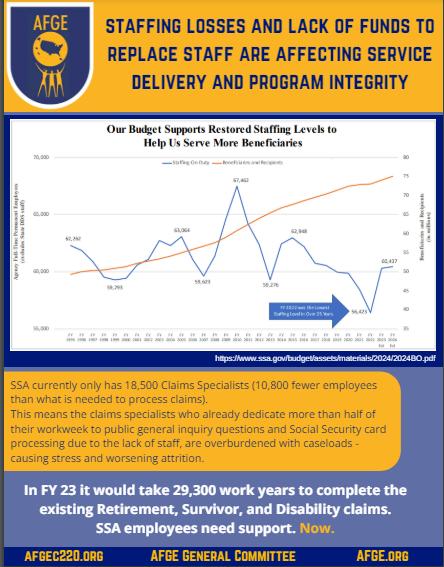
“The President’s FY 25 budget request for SSA is just that - a request - and about $4 billion too low to meet SSAs actual needs.”
A viable solution proposed is funding the SSA based on a percentage of benefit payouts (outlays) to align with public demand. Currently operating at approximately 0.95% of outlays, an increase to 12% would necessitate a budget allocation of $192 billion, much closer to meeting the agency's needs.
The ultimate decision lies with Congress, which determines the SSA's budget. Delays in budget approvals, as witnessed in FY 24, hinder the agency's ability to adequately plan and allocate resources.
Yet, concerted advocacy efforts, such as those of the AFGE, have been instrumental in mitigating the impact of funding uncertainties.
(continued)
Recognizing the urgency of the staffing crisis, the Union is spearheading mobilization efforts to secure the necessary funding for the FY 25 budget. Strategic planning sessions, with unionist volunteers' active participation, aim to drive collective action towards realizing program benefit solvency and ensuring adequate staffing levels
Workers are encouraged to engage with Congress at the local and state levels to advocate for increased funding and staffing. Legislative materials provided by the AFGE serve as valuable resources for informing lawmakers about the challenges faced by SSA employees and members As updates on the AFGE FY 25 request materials are underway, continued advocacy and collaboration remain essential in addressing the agency's funding and staffing needs
As part of our AFGE/SSA 2024 summer legislative drive initiative, for which we are currently developing through strategic planning sessions, we will have specific action tool kits available for this effort. They will be found at afgec220.org starting mid-June, at the latest, with a national Q and A session to follow
On our website, you can see the 13-city action and mobilization tour I am currently doing in Wisconsin in partnership with the Wisconsin Alliance for Retired Americans surrounding the understaffing and benefit solvency crisis. We are rolling something similar out in CA next. The WI actions are getting a lot of media coverage which is vital and all that coverage can be found on our FB page https://wwwfacebookcom/AFGECouncil220/
You are all out there working hard for our members and it shows. We will achieve our funding goals as long as we continue to show strength in our unity, stand up, and speak out. I ask you to join your union’s actions this summer to secure our funding needs because together we achieve more.
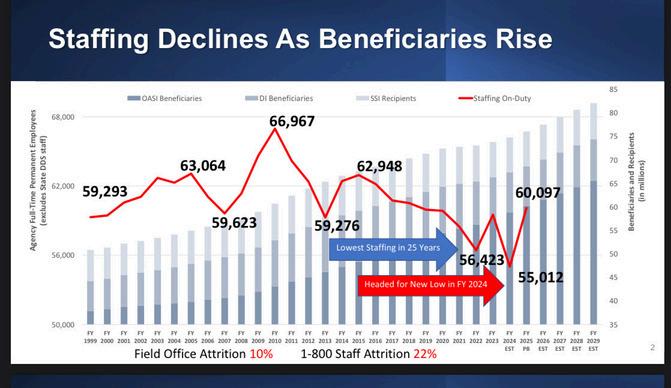
INVESTING IN OUR WORKFORCE
Staffing Levels
On March 23, President Biden signed into law the Further Consolidated Appropriations Act, 2024, which finalized SSA's FY 2024 funding level at $14277 billion to operate through September 30, 2024
Since then, Commissioner O’Malley has lifted the agency-wide hiring freeze and approved 1,600 critical hires for the teleservice centers We also authorized 1,290 field office hires, 600 hires for the State disability determination services, and 300 hires for our hearing offices
(continued)
WEARE ONE
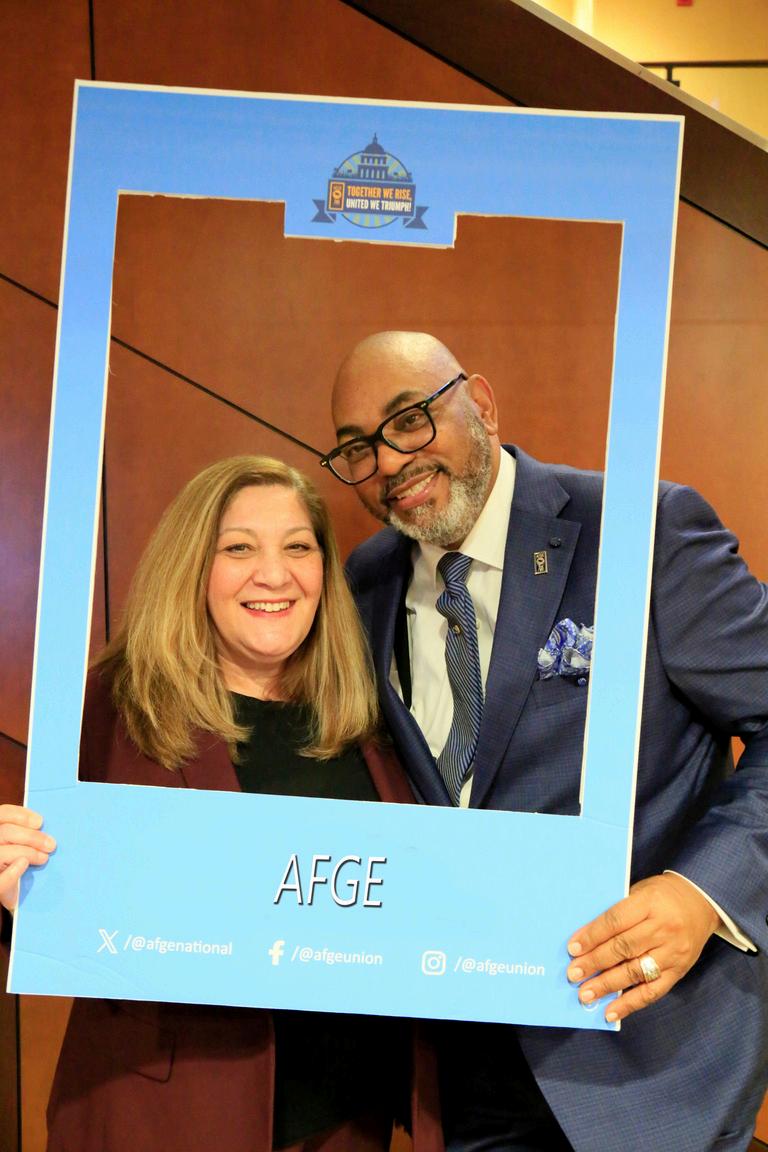

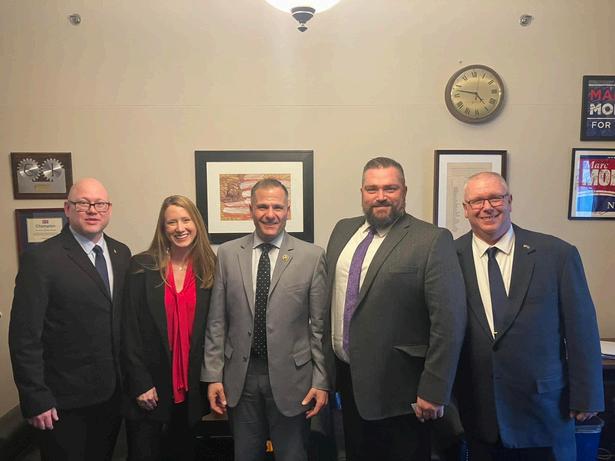





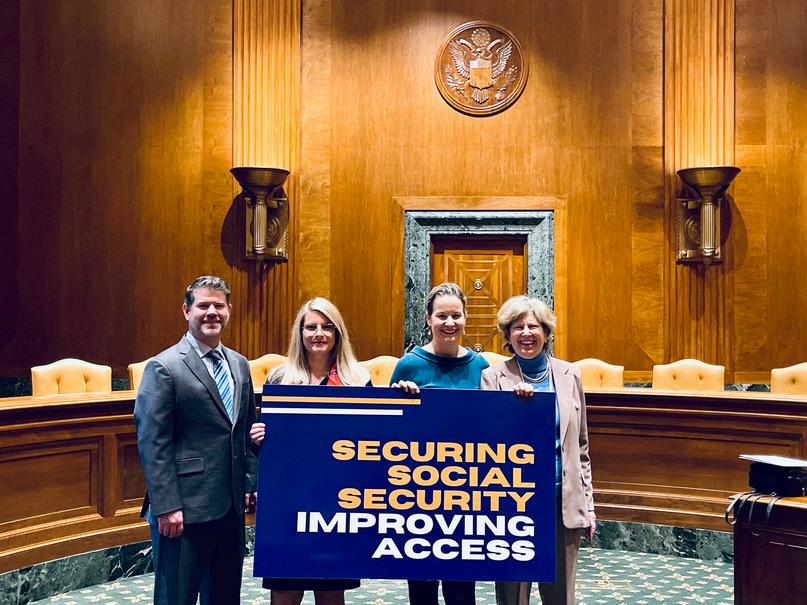
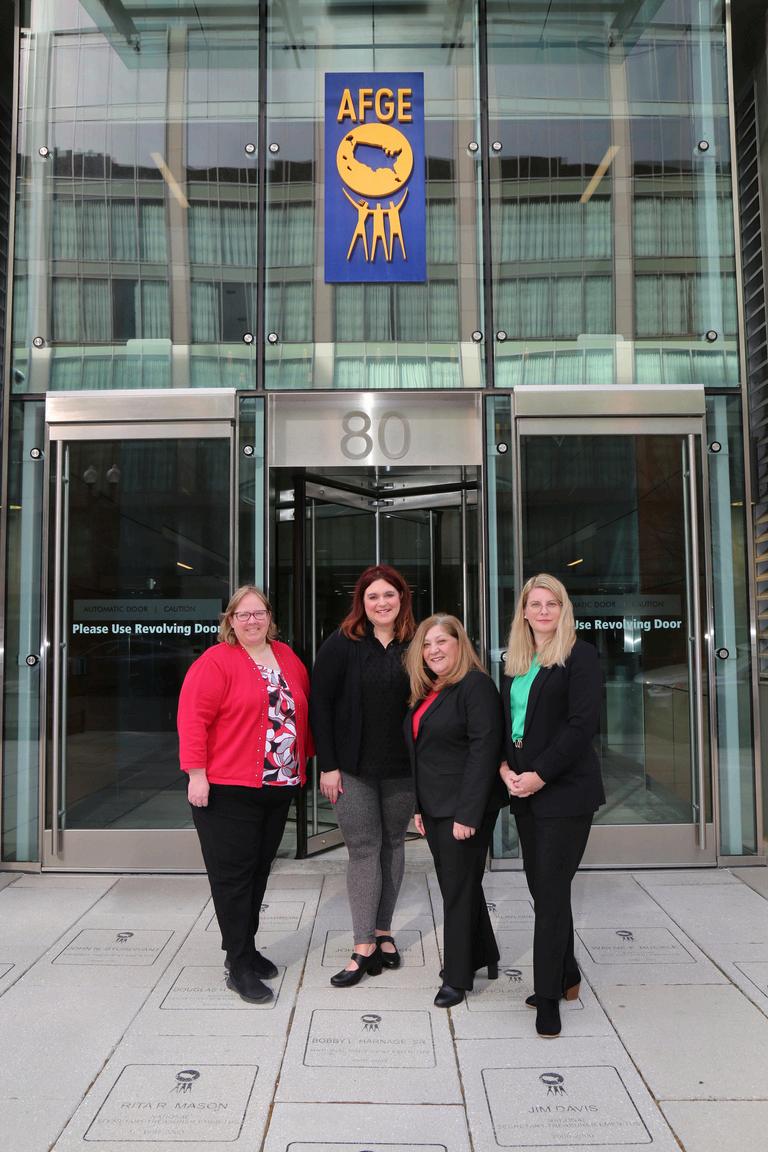







WEARE ONE

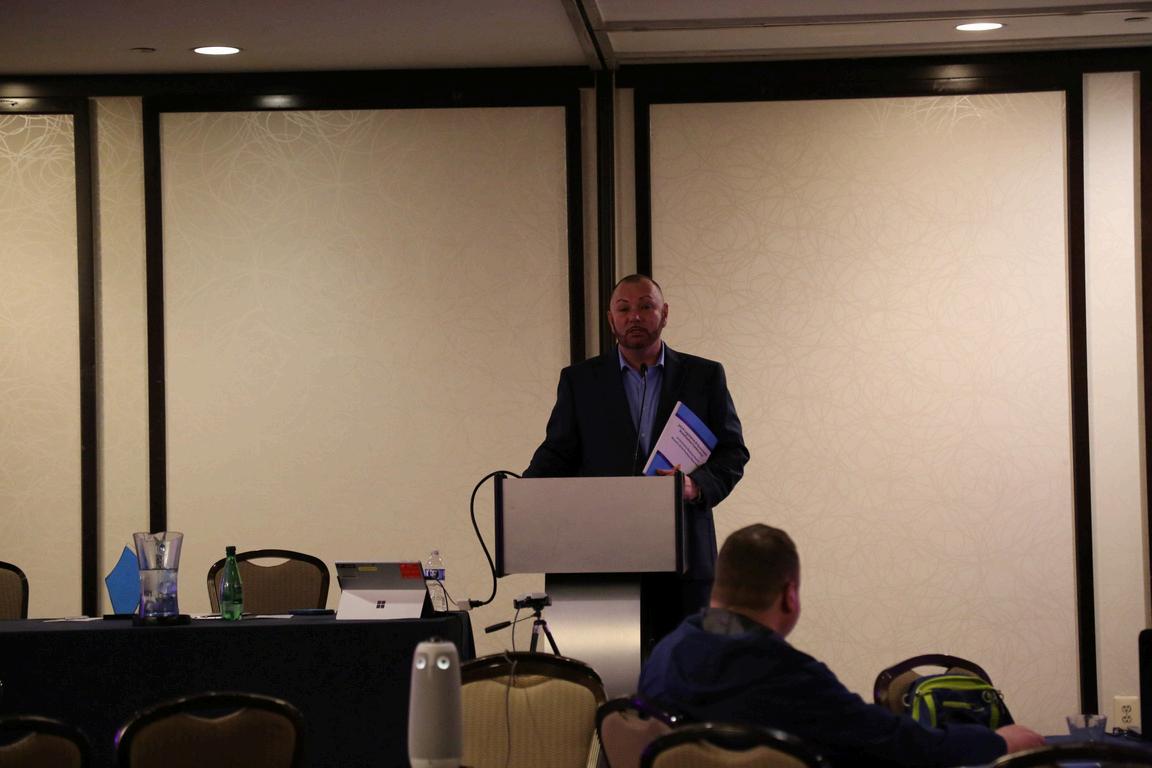



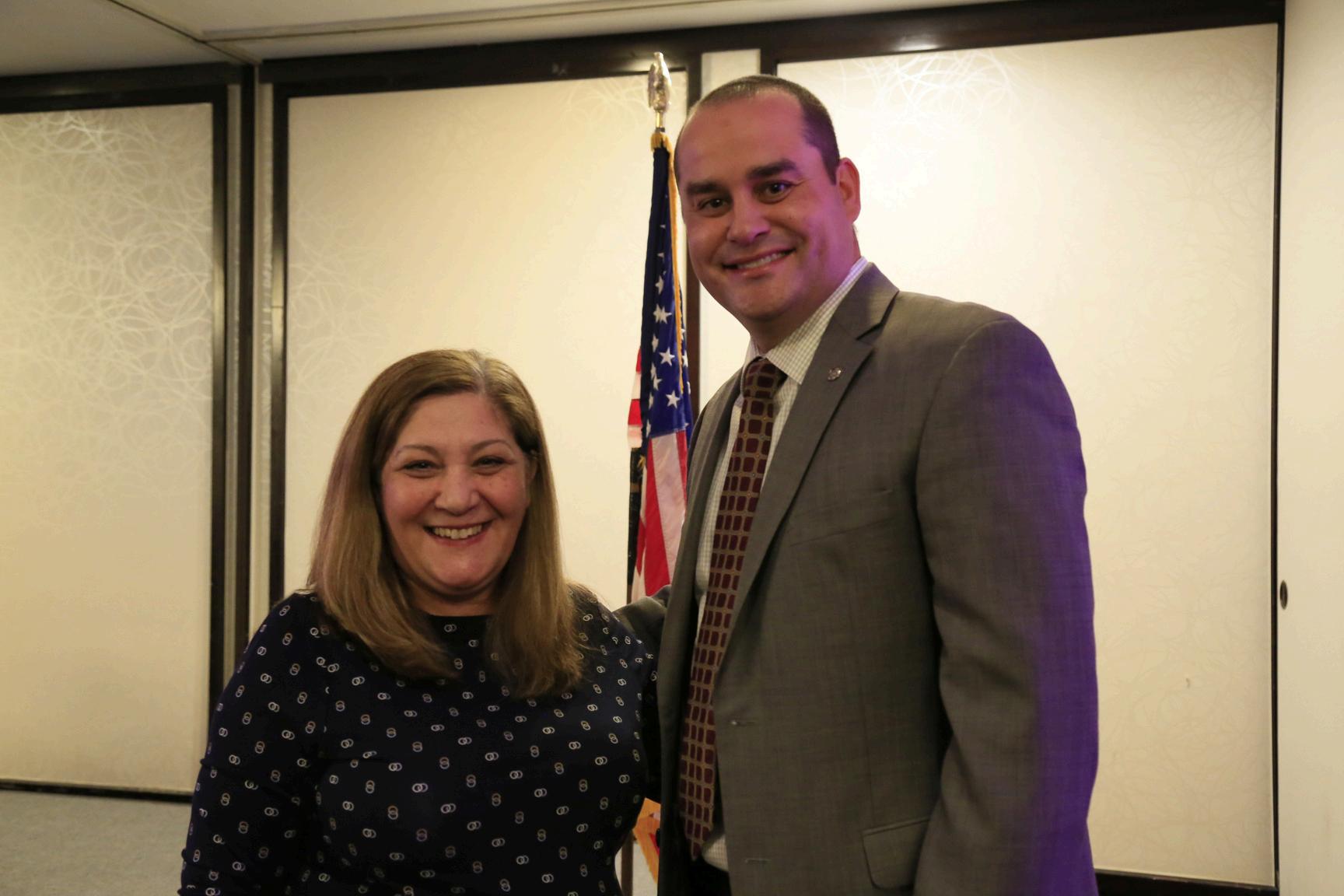





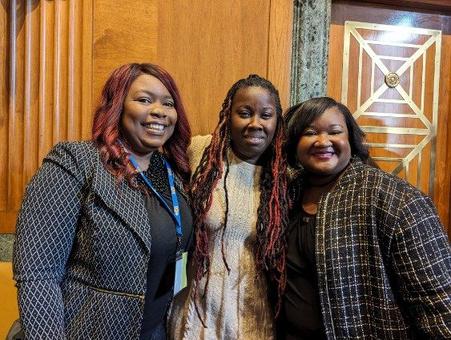
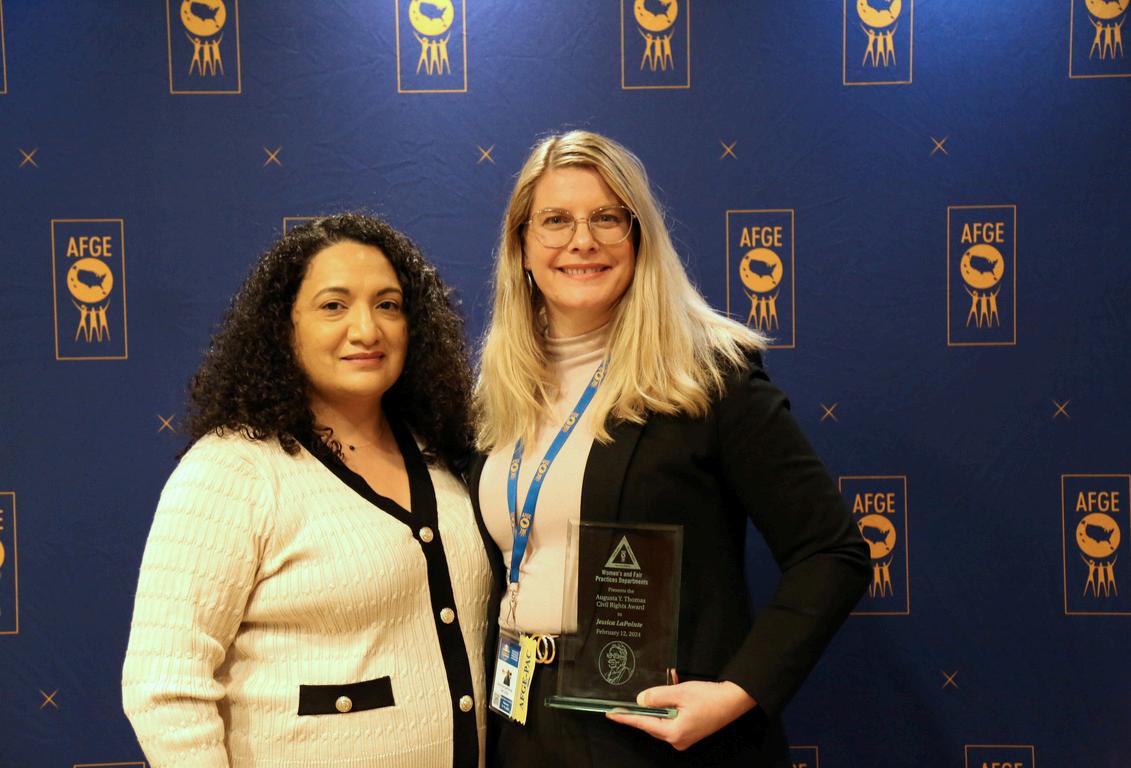

 By: Bill Price Local 3571
By: Bill Price Local 3571
In the annals of organizational lore, a peculiar yet instructive tale emerges from a rowing race between the Social Security Administration (SSA) and a private sector insurance company. This race, though seemingly inconsequential, offers profound insights into the dynamics of teamwork, management, and accountability
The saga begins with SSA's resounding defeat in the initial race, prompting a soul-searching initiative to uncover the root causes. A task force was swiftly assembled, and the findings from a thorough analysis conducted by a consulting firm were both enlightening and sobering

One of the glaring disparities between the two teams was the composition: while the private sector team boasted a full complement of nine members, fostering a sense of teamwork and cohesion, SSA's team was notably understaffed. Compounding this issue was the fact that SSA's team consisted primarily of managers and supervisors, whose propensity to criticize and demoralize the lone rower exacerbated the situation.

Another critical finding was the disparity in practice sessions. The private sector team had ample opportunity to refine their skills and build rapport, whereas the SSA team's requests to participate in practice were routinely denied, leading to inadequate preparation and coordination
The recommendations put forth by the consulting firm were clear: fully fund the project, reduce the number of managers and supervisors on the team, increase the number of rowers, and ensure that employees are included in practice sessions. Despite these actionable insights, SSA's rematch strategy fell flat
L E S S O N S F R O M A R O W I N G R A C E L E S S O N S F R O M A R O W I N G R A C E L E S S O N S F R O M A R O W I N G R A C E T E A M W O R K , M A N A G E M E N T & A C C O U N T A B I L I T Y T E A M W O R K , M A N A G E M E N T & A C C O U N T A B I L I T Y T E A M W O R K , M A N A G E M E N T & A C C O U N T A B I L I T Y
Despite restructuring the team and offering bonuses to managers and supervisors, the agency suffered another defeat, this time by an even wider margin.
Rather than acknowledging the fundamental flaws in their approach, SSA management resorted to a disheartening course of action. They issued a misleading press release, scapegoated the lone rower by firing them, and shamelessly rewarded themselves with bonuses This egregious mishandling of the situation highlights a profound lack of accountability and leadership.
The story of this rowing race serves as a poignant reminder of the critical importance of effective teamwork, employee involvement, and accountable leadership. SSA's failure to heed the recommendations and address systemic issues led to repeated defeat, underscoring the necessity of genuine introspection and corrective action.
In the broader context of organizational effectiveness, this story serves as a cautionary tale. Success hinges on fostering a positive work environment, empowering employees, and holding leadership accountable. By prioritizing collaboration, communication, and fairness, organizations can avoid the pitfalls of dysfunction and mismanagement exemplified by SSA's experience




MUSIC MAGAZINE UNITY LISTEN TO OUR Playlist CLICK AN ICON TO LISTEN

The Legionella contamination at the Detroit Federal building highlighted negligence and bureaucra failure in ensuring employee safety Employees learn of the contamination through a news report, management failed to communicate transparen Despite union requests for office closure and telew options, management downplayed the severity.
The General Services Administration (GSA) inform other Federal Agencies in October 2023, leading immediate telework mandates. However, S employees were unaware and continued to u contaminated water, relying on GSA assurances.
by Monique Buchanan

Efforts to address the issue internally were met with bureaucratic indifference. The Agency's response was inadequate, with delayed notifications and ineffective communication, leaving employees feeling endangered and uninformed.
Union representatives escalated the matter, involving higher authorities and media outlets They leveraged a GSA Inspector General report to demand immediate action Cease-and-desist emails and appeals to SSA officials underscored the urgency
Due to pressure and media scrutiny, the SSA temporarily closed the office and redeployed employees. This decision, made "out of an abundance of caution," followed persistent advocacy efforts and the revelation of broader issues regarding water safety in Federal buildings nationwide
The involvement of local news networks and congressional offices shed light on the gravity of the situation, prompting further investigations and scrutiny of GSA's practices. Union representatives, supported by employees and media coverage, played a crucial role in ensuring employee safety
This incident starkly emphasizes the importance of transparency, accountability, and proactive measures in ensuring workplace safety and protecting employee well-being.
"Union representatives, supported by employees & media coverage, played a crucial role in ensuring employee safety"

Local
3239

FIRST
DAYS DAYS TheCommish’s
By: Jessica Lapointe

Social Security Administration (SSA) in December brought a much-needed wave of hope among the Agency’s employees. There is a collective optimism that under his leadership, working conditions will improve and positive changes will be implemented to steer the SSA in a more sustainable direction
For too long, the SSA has been plagued by a lack of optimism about its future. Employees have been asked to do more with less, tolerate questionable and often unfair and inequitable management practices, mistreatment, and even abuse and manage ever-increasing workloads as the number of retirees grows and the number of employees decreases This has taken a toll on morale and led to frustration among staff, impacting the level of service provided to retired and disabled Americans.
As the president of the American Federation of Government Employees Council 220, which represents front-line employees at workload support units, teleservice centers and field offices nationwide, I have witnessed Commissioner O’Malley's efforts to build trust and engage with employees. In his first 120 days, he visited every region to listen to employees' challenges and ideas, and he launched Engage SSA, a platform for employees to provide feedback directly to SSA leaders Commissioner O’Malley has also been proactive in meeting with union leadership monthly, demonstrating a willingness to address concerns seriously.
Despite these positive steps, union leaders recognize that real change will only come with full funding from Congress. The SSA has been operating on a skeleton budget for too long, leading to absurd workloads for employees and frustrating delays in service for the public. Employee morale is at an all-time low, and the SSA ranks last in best places to work for the second year in a row To address these issues, we need increased funding to hire and retain top talent, starting with competitive pay.
Internally, AFGE continues to work with Commissioner O’Malley to address problems with SSA management. Managers often lack adequate screening, training, and evaluation, leading to a lack of support for employees Seasoned staff are overwhelmed with workloads and pressure to work through breaks and stay past their scheduled hours. Employees are feeling the mental health strain and burnout as their requests for flexibility are routinely denied.
While Commissioner O’Malley's leadership brings hope, the reality for front-line employees remains overwhelming Without increased financial backing from Congress, his ability to address the employee morale crisis and customer service backlog is limited. However, with continued collaboration between the SSA, the union, and Congress, there is hope for positive change and a brighter future for the SSA and its employees.
OP-ED
R E T I R M E N T C O R N E R
by: Witold Skwierczynski
The AFGE Legislative Conference, held from February 11-14, was a pivotal moment for the American Federation of Government Employees (AFGE) as they advocated for critical changes and funding to support the Social Security Administration (SSA) Among the top priorities was and still is securing the requested $17.39 billion budget for Fiscal Year 2024, a move aimed at restoring much-needed staffing levels within the SSA. Additionally, AFGE is urging Congress to approve a $20 billion supplemental package, which would address issues such as overpayments, technology upgrades, and strategies to incentivize staff retention
One of the major concerns facing Social Security is the threat posed by proposed Debt Commissions in both the House and Senate. AFGE is staunchly opposed to these commissions, fearing that they could lead to cuts in Social Security benefits Instead, AFGE is throwing its support behind bills put forth by Congressman Larson and Senator Sanders These bills not only propose benefit enhancements but also suggest tax increases on high earners to help sustain the Social Security program.

During a recent AFGE Retiree Committee meeting, concerns were raised about the impact of Medicare Advantage (MA) on seniors It was noted that MA plans often limit provider choice and use non-essential benefits as a means to attract enrollees. Furthermore, MA plans can lead to delays in services and end up costing the government more in the long run To address these issues, AFGE is recommending a shift towards Traditional Medicare, coupled with the option for private insurance to provide seniors with a broader choice of providers.
In addition to these specific issues, AFGE is also highlighting the importance of protecting seniors from financial fraud The Consumer Financial Protection Bureau (CFPB) plays a crucial role in this regard, offering resources such as guides and webinars to help seniors identify and report financial fraud Seniors can file complaints with the CFPB online or by phone at 1-855411-2372.
Despite these challenges, there is optimism surrounding the new SSA Commissioner, Martin O'Malley Commissioner O'Malley has already taken positive steps, such as soliciting feedback from employees and fostering collaboration with the union. His proactive approach is seen as a promising sign of positive change within the SSA
As AFGE continues it legislative efforts, we are calling on members to actively participate by contacting their legislators and demanding proper funding for the SSA. With these efforts, AFGE aims to secure a brighter future for Social Security and the millions of Americans who rely on it for financial security.


Over the past nine years, Jessica has been a powerful force in political lobbying for AFGE, advocating tirelessly to maintain a communitybased field office in a low-income, predominantly Latino neighborhood in Milwaukee She has organized rallies, attended political fundraising events with leaders like Senator Tammy Baldwin, and ensured that employees'voicesareheard.
InherroleasCouncil220President,Jessicahas ledtheplanningandorganizationofrallies, legislativeconferences,townhalls,research studies,andpressevents Hercollaborative approachanddedicationtotheUnionand workingfamilieshavebeeninstrumentalin advancingcivilandhumanrights,strengthening theworker'srightsagenda,andbuilding allianceswithAFL-CIOconstituencygroupsand otherorganizations.
JessicaLaPointe,Presidentof AFGECouncil220andVice PresidentofLocal1346atthe SocialSecurity AdministrationinAFGE District7,hasbeenawarded theprestigiousMember MobilizationAwardforher outstandingcommitmentto organizingAFGEmembers aroundcivil,human,and worker'srights.
Congratulations,Jessica

MENTAL MENTAL
HEALTH & ME HEALTH & ME
We made it to the month of May! Congratulations May is mental health awareness month Guess who is responsible for your mental health, YOU. It’s no secret, now more than ever SSA employees are feeling it, we are being bombarded with unrealistic demands and expectations, we are overworked, beyond burn out Although the Agency seems to move in the right direction in admitting the attrition rates and how its debilitating the workforce, there's more work to do. It's more than a budget issue when you deal with the wellness of its employees The importance of mental health can no longer be ignored with the mentality of “business as usual.”
 by: Jennifer Ramirez-Serrano Local 3369
by: Jennifer Ramirez-Serrano Local 3369

Ensuring the health safety and wellbeing of the workforce is and will always be a top priority of ours. The Union is creating partnerships with EAP to ensure we are all empowered and informed of the wellness resources that are out there for us Whether you are struggling with changes, work-related stress, family issues, parenting, life changing events, healing from past trauma, etc. EAP is available to help. EAP can be accessed and utilized while on agency time not only for you, but for your spouse/significant other and dependents through 25 EAP and your Union work in concert when it deals with employee wellness and psychological safety in the workplace. We look forward to continuing this collaboration in eliminating the stigmas surrounding mental health in SSA In addition to holding SSA accountable in ensuring EAP services are promoted appropriately to you and made easily accessible.
Undeniably, there is no separation of your brain and yourself, everything is connected: Mind, Body, Spirit. We need our healthy brains to be able function and to do the job. A healthy and happy workforce is a productive workforce No one should work themselves to sickness or to death In celebration of Mental health awareness month, commit to making yourself a priority. It’s not selfish, it’s not egocentric it’s knowing your value and self-advocating for yourself
(CONTINUE)
EAP is available 24/7, 365 days a year call 1-877-549-9528, information will be kept confidential and is free of charge. Visit their website at www.ssaeap.com

Here are some tips that can help you combat some of our job-related stress, that if left untreated can be responsible for long term health harming effects.
Do the things that bring you joy- There is life outside of SSA. You have a life outside of SSA
Seek Employee Assistance Program EAP counseling- 6 sessions per issue on Agency time, no need to use your own time, speak to your supervisor let them know you are interested in getting EAP. That’s it. EAP is available 24/7, 365 days a year call 1-877-549-9528, information will be kept confidential and is free of charge. Visit their website at wwwssaeapcom
Join a fitness group- Sitting is the new smoking, so remember to move your body. SSA offers virtual fitness classes thru SSA’s work-life services website, some are pre-recorded others are actually lead by live instructors offered during lunch time.
Have a creative output- We all do jobs that are very policy driven in addition to that SSA is not known as an agency that values creativity, this does not mean you should not be creative on your own time
Remember your why- Sometimes we tend to forget why we do this work to begin with. Go back to your why.
Give yourself grace- Don’t try to put 12 hours of work into a 8 hour day Show up, do the best you can and repeat
Take your breaks and lunch and unplug- Breaks and lunch are essential they are our right. Use them to disconnect and refresh.
Get some outside air and sun- Think about the hours we are in front of a screen, walking in general has so many physical and mental benefits Get your Vitamin D sunshine
Find a hobby- Your job is simply what you do. Your job is not who you are.
Surround yourself with people who inspire and motivate you- Do not isolate yourself, pour into others and have them pour into you
If you are experiencing a season of isolation, negative self-harming thoughts, questioning the importance of your existence please contact the Suicide Prevention Lifeline 1800-273-8255 or text HOME to Crisis Text line at 741741.
(CONTINUED)

PERSPECTIVE Life After Service
 By: The Unknown Solider
By: The Unknown Solider
As we celebrate Military Appreciation Month, it's vital to reflect on the invaluable contributions veterans make to our workforce and society as a whole. As a military veteran myself, I understand firsthand the unique skills, experiences, and values we bring to the table.
Veterans possess a wealth of qualities that are highly sought after in the professional world Through our service, we develop strong leadership abilities, effective communication skills, and the capacity to thrive in high-pressure environments. These traits are not only beneficial in military operations but also translate seamlessly into various civilian professions. Furthermore, veterans are accustomed to working in diverse teams, often comprised of individuals from different backgrounds and cultures This adaptability fosters an inclusive and collaborative work environment, which is essential for success in today's interconnected global economy.
Moreover, veterans are known for their resilience and ability to overcome challenges. Our training instills a sense of discipline, determination, and problem-solving skills that are invaluable assets in any workplace setting
Employers who prioritize hiring veterans not only benefit from their skills and attributes but also demonstrate their commitment to supporting those who have served our country. By tapping into the talent pool of veterans, businesses can enhance their competitiveness, innovation, and overall performance.
As we honor Military Appreciation Month, let us recognize the importance of integrating veterans into the workforce and continue to support initiatives that promote their employment opportunities. By doing so, we not only honor their service but also enrich our workplaces and communities
IF YOU ARE INTERESTED IN SUBMITTING AN ARTICLE? CLICK HERE OR USE THE QR CODE


HAVE SOMETHING TO SAY? A UNION WIN? OR SOMETHING THAT NEEDS TO BE SAID IN A SAFE SPACE? FEEL FREE TO REACH OUT AND SHARE YOUR THOUGHTS. EVEN IF YOU WISH TO BE THE MYSTERIOUS "UNKNOWN AUTHOR" WE CAN DEFINITELY MAKE IT WORK. UNITY IS A MAGAZINE OF THE PEOPLE, BY THE PEOPLE, FOR THE PEOPLE.















 by: Jessica Lapointe
by: Jessica Lapointe

 by: Edwin Osario
Local 3369
by: Edwin Osario
Local 3369






 BY: Joel D Smith Local 3184
BY: Joel D Smith Local 3184




































 By: Bill Price Local 3571
By: Bill Price Local 3571















 by: Jennifer Ramirez-Serrano Local 3369
by: Jennifer Ramirez-Serrano Local 3369


 By: The Unknown Solider
By: The Unknown Solider

